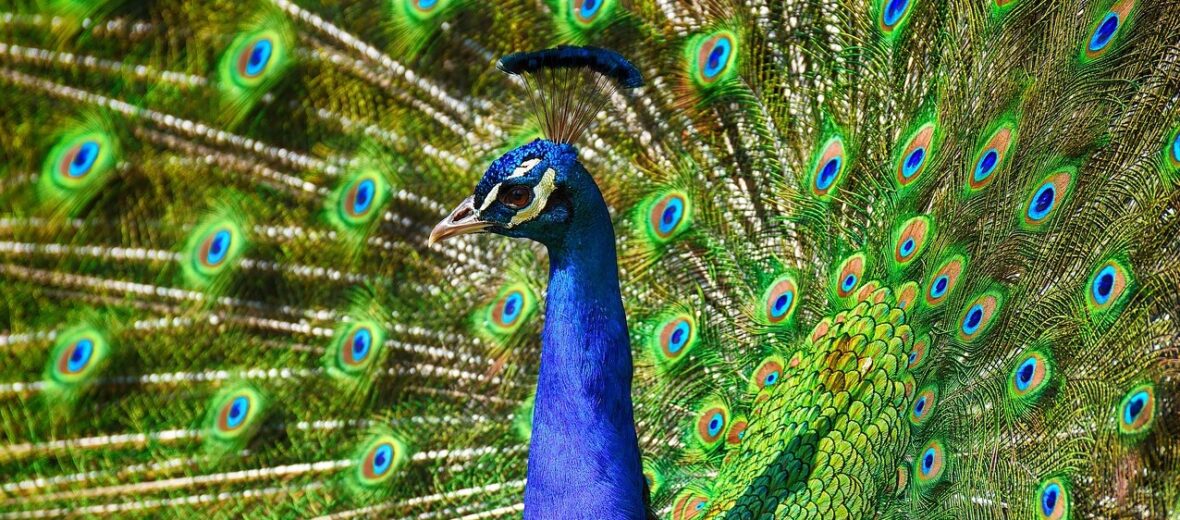
Ah yes, the peacock. A bird famous the world over for it’s glorious plumage. These birds belong to the pheasant family and hail from Asia and Africa. There are actually 2 species of peafowl from Asia and 1 from Africa to fancy: Indian Peafowl, Green Peafowl, and the Congo peafowl. The peacock, aka peafowl, is actually a term given only to the adult male of the species. Females are called peahens, and the young are called peachicks. While the Indian peafowls are considered Least Concern by the IUCN, green peafowls are listed as Endangered and the Congo peafowls are listed as Vulnerable.
First the Stats…
Scientific name: Pavo
Weight: Up to 13 lbs.
Length: Up to 3.8 feet
Wingspan: Up to 5.24 feet
Lifespan: Up to 50 years
Now on to the Facts!
1.) Peafowls are capable of making up to 11 different sounds to communicate. And are loud to boot!
2.) These are social birds that don’t do well alone.
3.) They eat arthropods, amphibians, small reptiles, flowers, seeds, and more, making them omnivores.
4.) Their primary predators are leopards, tigers, and mongooses.
5.) A bevy is the name given to a family of peafowls.
But wait, there’s more on the peacock!
6.) Groups of peafowls are called a muster, an ostentation, or a party.
7.) Peacock tails make up to 60% of their total length.
Did you know…?
When a peacock fans its train for the gals during mating season, its feathers will quiver, thus emitting a low-frequency sound that is inaudible to human ears. Similar to how an elephant emits a infrasonic rumble to communicate with one another.
8.) Females lay between 3 – 6 eggs each season.
9.) Peacocks are polygamous (mate with more than 1 female) and typically have a harem that consists of 2 – 5 peahens.
10.) They can run up to 10 mph.
Now a Short Peacock Video!
Also, check out the Critter Science YouTube channel. Videos added frequently!
Want to suggest a critter for me to write about? Let me know here.




Leave a Reply